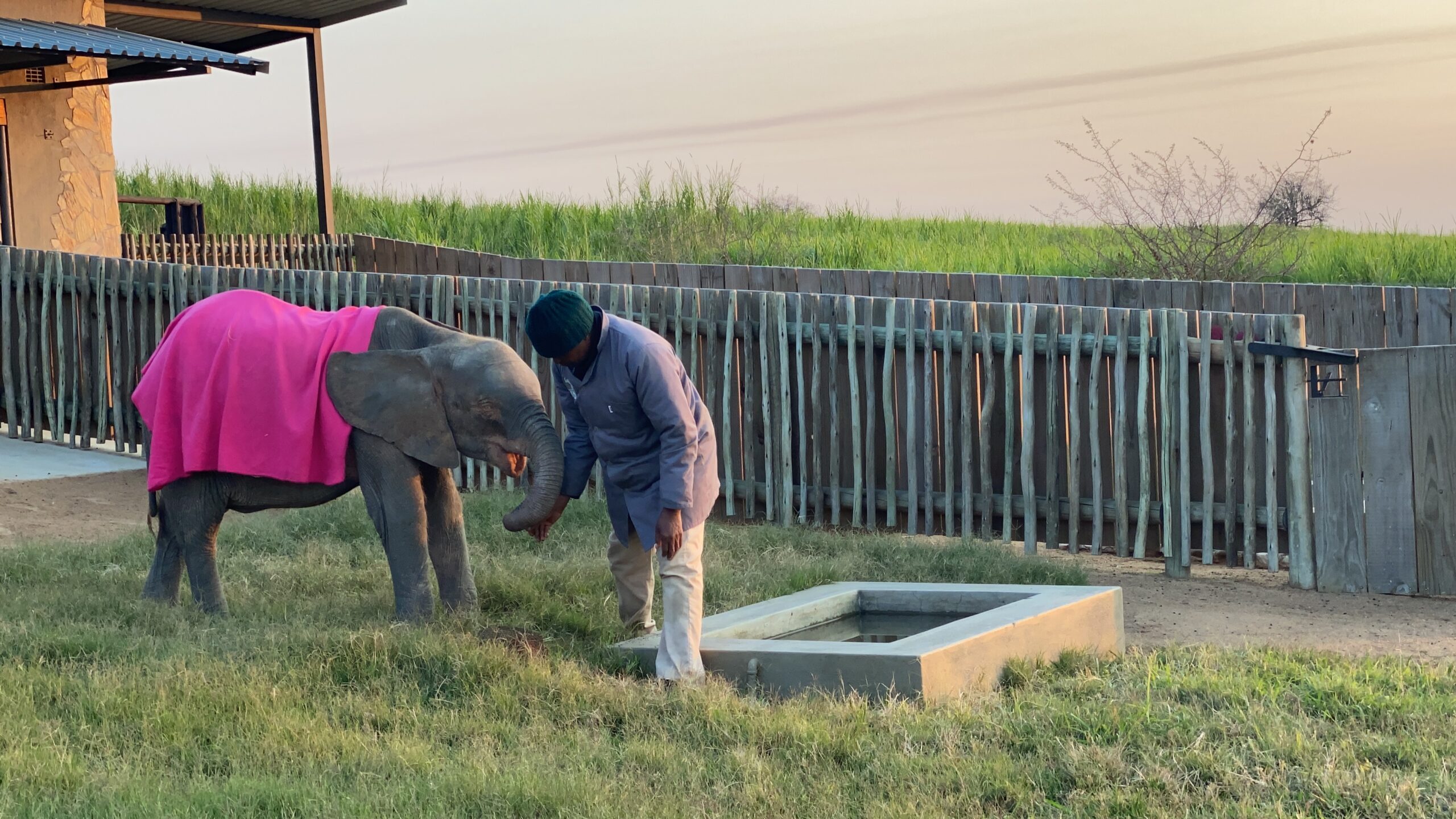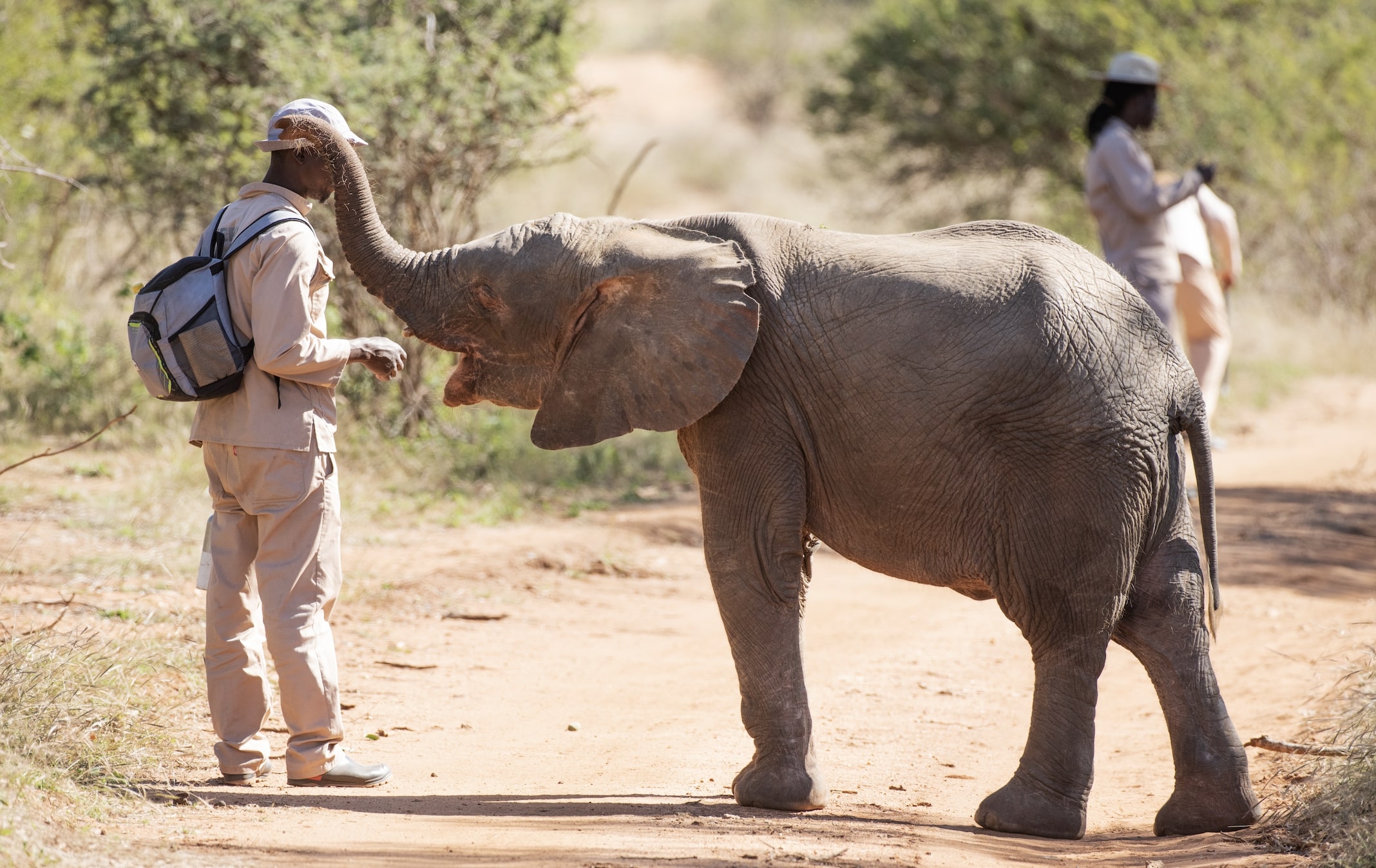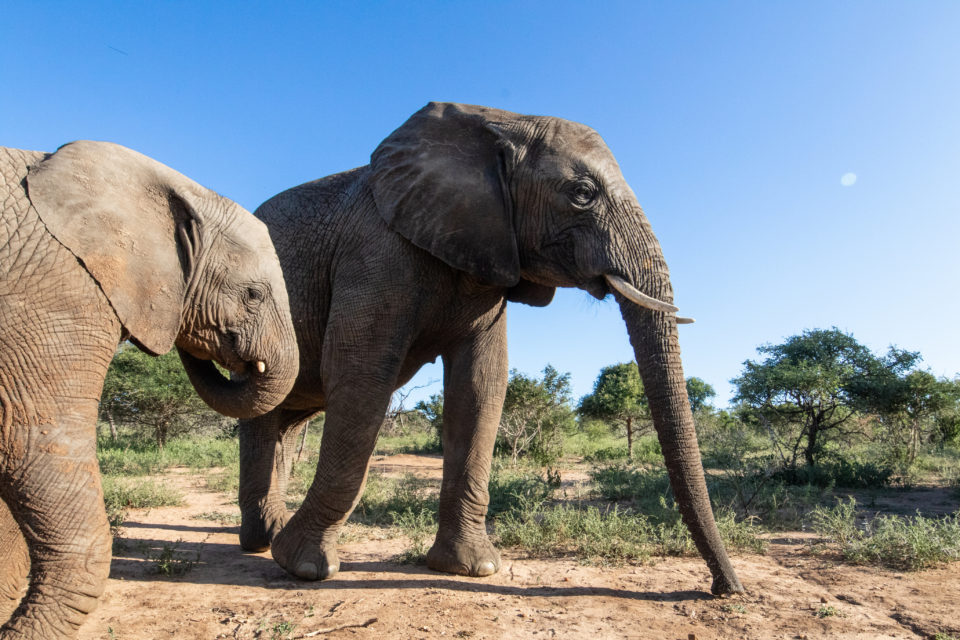She was unlike anything we had seen before, a tiny albino elephant with light blue eyes like the ocean and puffy pink cheeks. She stood not even at hip-height to us. She was so young, only four months old, and had already been through such a tremendous tragedy: she had lost her mother, her herd, and almost her life after being caught and trapped in a poacher’s snare.
As we countdown to Khanyisa’s second birthday on 26 September 2021, we are looking at a few of her milestones and her progress since she first arrived in our care at HERD in January 2020. The most significant part of her rehabilitation process was the successful treatment of her wounds, thanks to the incredible work of Wildlife Vet, Dr. Peter Rogers and the around-the-clock care of our HERD team.
Watch this video for a look at what it took to help her heal from her physical wounds:
Khanyisa was rescued on 7 January 2020, having survived several days on her own in the wild, severely injured from a snare that had wrapped itself around her head, severing the top lobe of her left ear and causing severe lacerations around her head, neck, mouth and cheeks. The four-month-old calf somehow freed the snare from the ground, but it remained wrapped around her, continually rubbing and cutting into her flesh.
The fact that she survived so long in the wild is a miracle. She was dehydrated, and her eyes had swollen shut from pressure building from the snare and the swelling around her head. The trauma she experienced, although not visually evident, will no doubt cut much deeper than the physical pain she endured.
At first, we treated the wounds to combat infection for some time, until such time, we were happy to stitch her cheeks as well as her right ear. Throughout this time, we ensured that her wounds had been kept at clean as possible. When the time came, Adine removed the stitches.
We applied a stem cell treatment to help the wounds heal further. The stem cell treatment is a skin-restoring serum that combines plant-derived stem cells cultivated from Argan tree and Comfrey roots, which help to regenerate dry and damaged skin. With a natural extract from the aerial part of Onopordum Acanthium, they help to increase skin turnover.
The team were incredibly delighted with Khanyisa’s progress as her wounds healed beautifully, leaving only a faint scar where the snare had entrapped her. Even Khanyisa’s emotional wounds seem to have been alleviated though the love, support and acceptance that she has received from her new adoptive herd and her human carers.
We could not have achieved this great accomplishment without the hard work of Dr Rogers and our team of Carers, as well as the financial support of fosters and donors, and the motivation from our greater HERD Community.
HERD relies on funding to cover our operational costs as well as the high costs of Khanyisa’s care. If you would like to contribute, please consider fostering Khanyisa for her 2nd birthday and receive a special birthday certificate,>




 Comment
Comment






Es una pequeña hermosa guerrera!!
Yo la amo❣️❣️
Hi is khanyisa being albino visually impaired? I ask as I’ve had albino friends who all had visual impairments. I’m registered blind. And physically disabled it’s made me wonder especially with going from outside to inside or inside to out can b tricky as it’s t light change. Also should she have sunblock put on before she goes out as she doesn’t have normal pigment